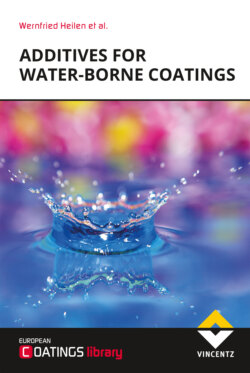Читать книгу Additives for Waterborne Coatings - et al. - Страница 61
На сайте Литреса книга снята с продажи.
3.2.2.6Bridging de-wetting mechanism
ОглавлениеAnalogous to the bridging stretching mechanism the first step of the stretching de-wetting mechanism is droplet entry and bridging. This is only possible if the entry barrier of the lamella can be overcome and the defoamer has a positive bridging coefficient. In systems with low surfactant content, spontaneous de-wetting of the defoamer droplet would be expected. In surfactant-rich systems, such as coatings, spontaneous de-wetting will not occur as the surfactants will wet the defoamer droplets. The ability to wet the defoamer droplet can be characterised by the contact angle between the defoamer droplet and the surrounding liquid. If the contact angle is less than 90° the defoamer droplet is wetted by the surrounding liquid. However, if the defoamer droplet is able to assume a lens shape, the contact angle at the edges of the lens becomes high enough to cause de-wetting of the defoamer droplet followed by collapse of the foam bubble [6] [8].
In cases where the lens undergoes further deformation without de-wetting, the bridging de-wetting mechanism transforms into the bridging stretching mechanism. It is probable that the bridging de-wetting mechanism occurs preferentially with higher viscosity defoamer oils, which are able to form more stable oil lenses. For low viscosity defoamers the bridging stretching mechanism is more likely.
Figure 3.8: Bridging de-wetting mechanism
Up to now, evidence has been found for the bridging de-wetting mechanism for hydrophobic particles only in systems free of strong surfactants. It is unlikely that the bridging de-wetting mechanism applies in real surfactant-rich coatings systems. Because of the very fast de-wetting process it has not been possible to definitely confirm the mechanism for defoamer oils yet [8].
